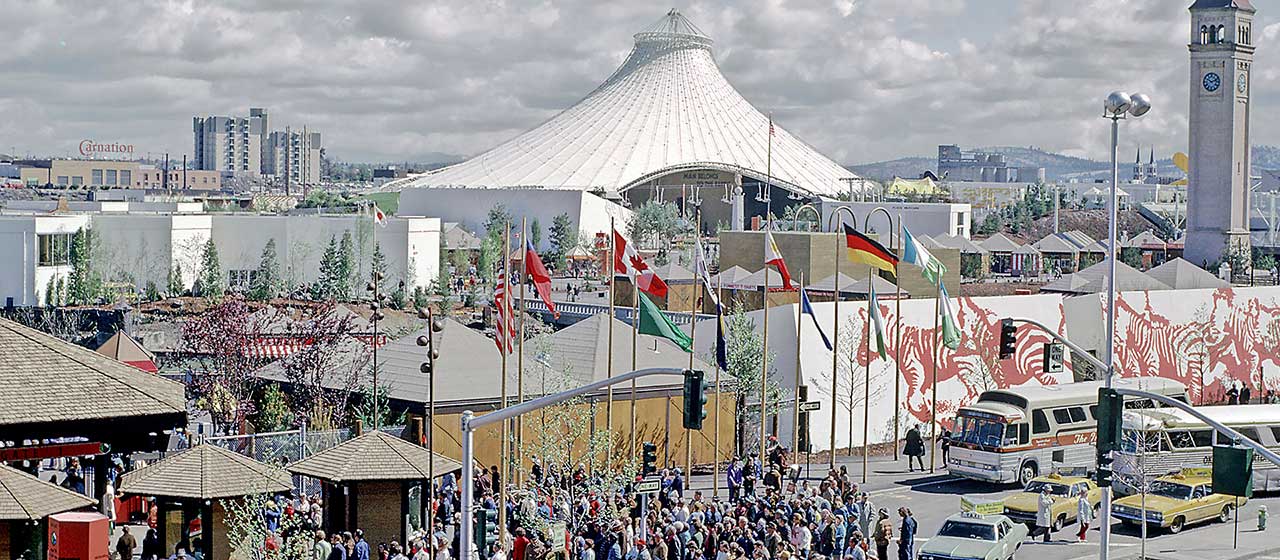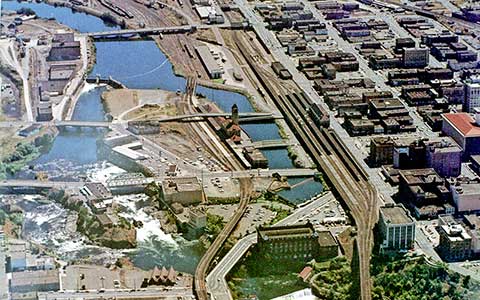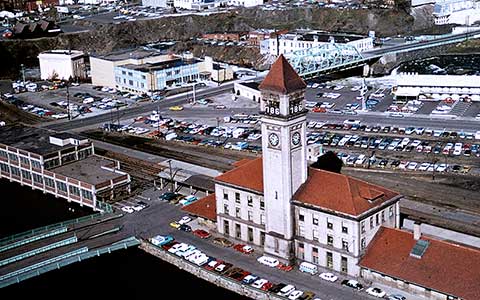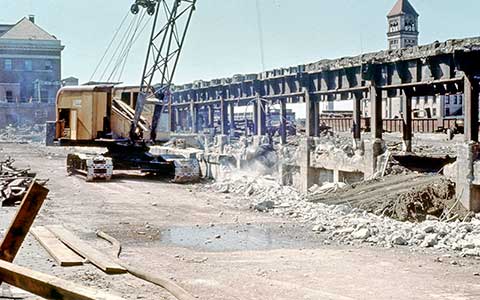A Historic Look at Riverfront Park by Decade

Members of the Fort Walla Walla Museum’s Heritage Research Services and the Spokane Tribe of Indians' Preservation Program were called in to complete and extensive survey and investigation of the park and its history. The report generated from this work is a tool that can be used to help identify and understand pieces of the past that may resurface during the redevelopment process. Check out this incredible, easy-to-navigate website for a journey through the history of life along the Spokane River and the development of the city. Thank you to the Historic Preservation Office for their fantastic work on this website!
History
Riverfront Park occupies 64 acres of land and water with a rich and varied history. Spokane Falls and the surrounding land has long been a gathering place for people. Native Americans gathered and fished at the Falls. In the late 1800s, pioneers settled here and started the City of Spokane. The railroad industry fueled the city's growth and rail yards covered Havermale Island, the present site of Riverfront Park.
In 1974, Spokane hosted Exposition '74, "The World's Fair." In preparation for Expo '74, the Spokane River was cleaned up, the rail yards were removed, and the Great Northern Railroad Depot on Havermale Island was demolished. Our Clock Tower is all that remains of the 1902 depot. View pictures and read more about Expo '74.
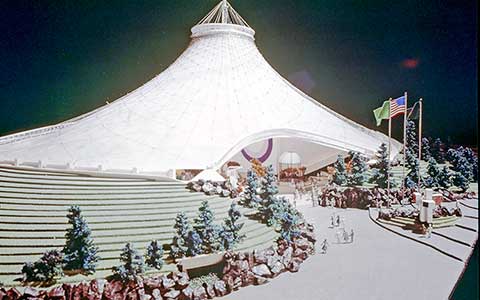
The U.S. Federal Pavilion was a gift to the Spokane region from the United States government. The Pavilion during Expo consisted of an 850-seat air-conditioned amphitheater within the primary Pavilion enclosure, a 17,000-square-foot central courtyard for theme exhibits that focused on environmental problems and how to address them in the daily American household, and a 5,500-square-foot Federal Action Center where you could learn the Federal government's approach to environmental problems. The Pavilion was one of three buildings meant to remain after Expo. A quote from Chief Seattle adorned the primary wall upon entering the Pavilion:
"The Earth does not belong to Man. Man belongs to the Earth."
On May 4, 1974, Richard Nixon declared Expo '74 "officially open to all the citizens of the world." Spokane was the smallest city to have hosted a World's Fair at the time, and at the end of its six-month run, over five million people—roughly 28 times the city's population—had attended.
On May 5, 1978, President Jimmy Carter dedicated the former Expo site as Riverfront Park, praising the people of Spokane for investing in this great treasure.
"Riverfront Park shows very clearly what can be accomplished in urban redevelopment. You've transformed an area that was declining, that was far short of its great potential, into one of the nation's most innovative and refreshing urban settings." – Jimmy Carter
Only the Pavilion, the Gondolas, and the Clock Tower remained from Expo in the new Riverfront Park. The Looff Carrousel was relocated to the park in 1975 from Natatorium Park, a historic amusement park that closed in the 1960s.
Spokane looked to maintain the festival atmosphere in the Pavilion by removing the amphitheater and replacing it with a petting zoo, amusement rides, an ice rink, and a 90-minute theatrical exhibit on the history of Spokane. A building to house an IMAX theatre was also added adjacent to the Pavilion. By the mid-1980s, only the rides, arcade room and ice rink remained. In the late 1980s, mini-golf was added as an additional attraction.
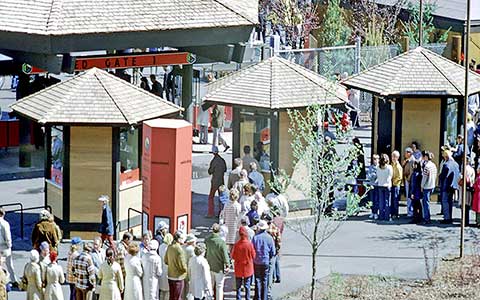
While there had been various changes and improvements to the park since Expo '74, there had not been a comprehensive look at the park in its entirety since 1973. That is until 2012, when City of Spokane Parks and Recreation launched an initial Phase I of the Riverfront Park Master Plan. A public survey was distributed and public outreach conducted. The result was a broad look at the park, its potential uses and potential programmatic zones. The Riverfront Park Master Plan Phase II clarified this overall vision and defined specific uses for the park as Spokane looked to the next 40 years. In 2014, Spokane citizens overwhelmingly approved a $64 million dollar bond to improve and redevelop the park. The bond approval did not increase citizen taxes and funded five major design elements:
- The design of Public Spaces and Park Grounds
- The Recreational Rink and SkyRide Facility
- The Looff Carrousel Building
- The U.S. Pavilion and Event Shelters
- The Regional Playground
Redevelopment is currently underway and will be completed by 2020. Stay up to date on the latest redevelopment information and sign up for the newsletter by visiting our Redevelopment page.
Riverfront Park continues to be a popular gathering place for local residents and tourists. We also host a variety of community events during the year, so there is always something fun to do! Browse our site for more information.
